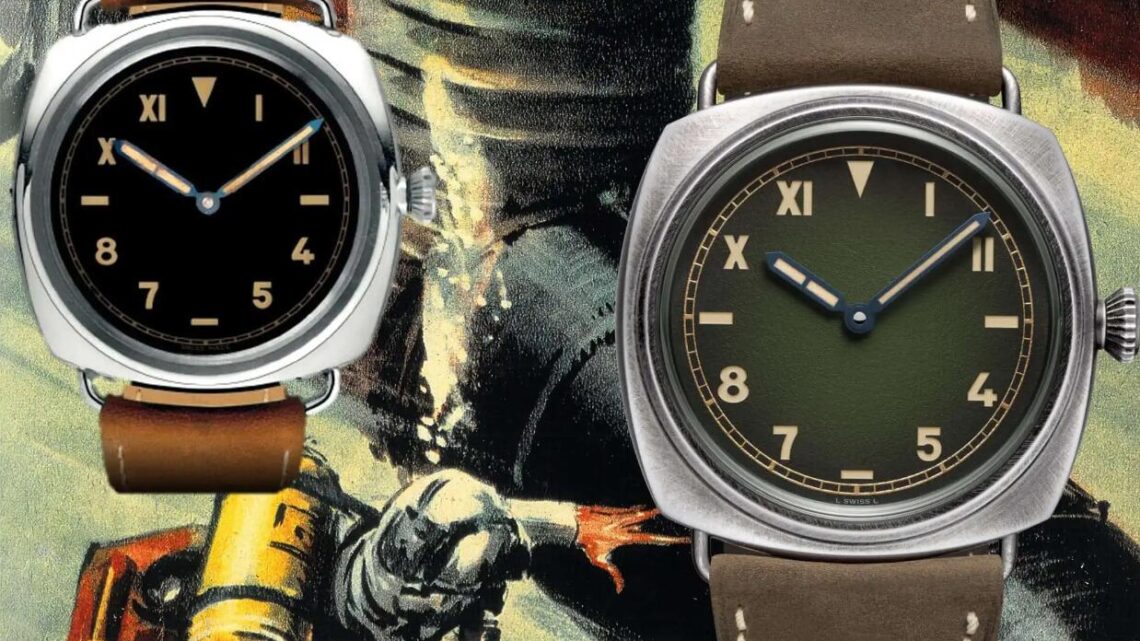
Fake Panerai Radiomir California PAM01349 with Sunshine State dial
On the left is the Fake Panerai Radiomir California Dial, reference 3646 from 1944 and on the right is the Panerai Radiomir California, reference PAM01349, from 2023.
For the first time, Panerai is offering a Radiomir measuring just 45 millimeters with the so-called California dial. The hand-wound caliber P.5000 ticks away in the burnished steel case.
Error-free dial
Of course, the new Panerai Radiomir California, reference PAM01349, presented at Watches & Wonders 2023, also has an authentic history. And it begins in the mid-1930s. The special appeal of this non-limited wristwatch lies in the so-called California dial with Roman hour numerals in the upper half and Arabic numerals in the lower half.
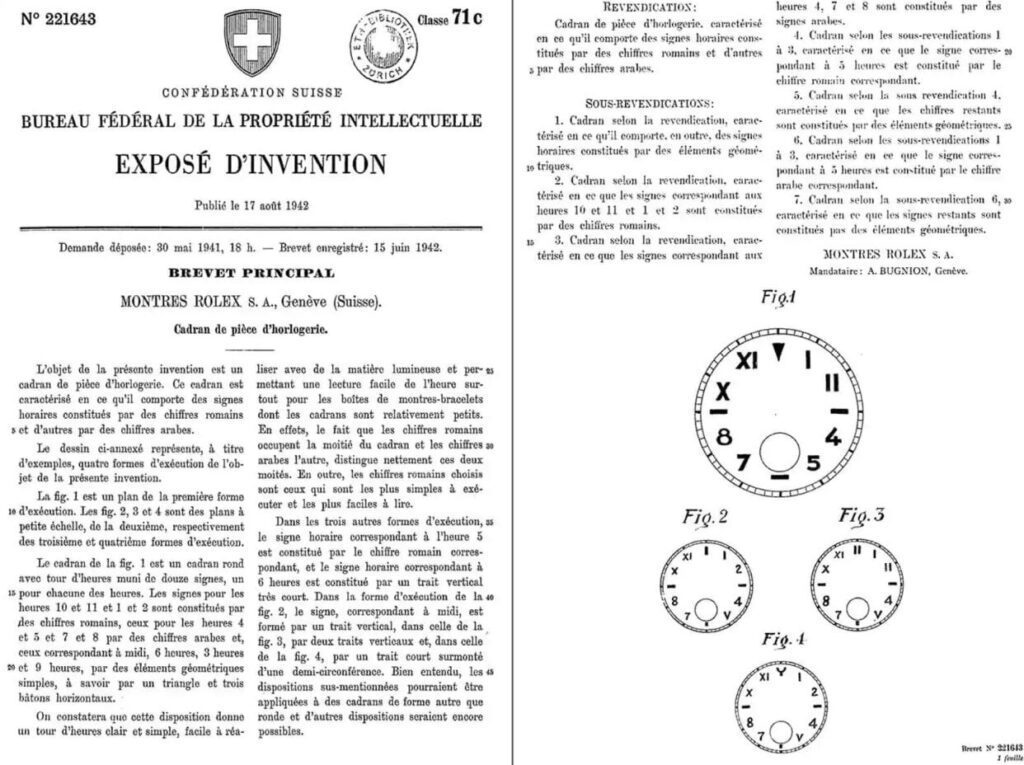
Its genesis goes back to 1941. On May 30th, Montres Rolex, which manufactured the cushion-shaped Radiomir models from A to Z for Panerai, applied for protection for an error-free or, in its own words, readable luminous dial. The patent granted by the authorities is dated June 15th, 1942. The manufacturer justified the application with the following words, among others:
“The dial of FIG. 1 is a round dial with an hour circle with twelve characters, one for each hour. The characters for the hours 10 and 11 and 1 and 2 are Roman numerals, those for the hours 4 and 5 and 7 and 8 are Arabic numerals, and those for noon, 6 o’clock, 3 o’clock and 9 o’clock are simple geometric elements, namely a triangle and three horizontal bars.
It will be seen that this arrangement gives a clear and simple rotation of the hours, which is easy to achieve with luminous material and allows the time to be read easily, especially in wristwatches whose dials are relatively small. The fact that the Roman numerals take up half of the dial and the Arabic numerals the other half clearly distinguishes the two halves. Furthermore, the Roman numerals were chosen because they are the simplest to execute and the easiest to read.”
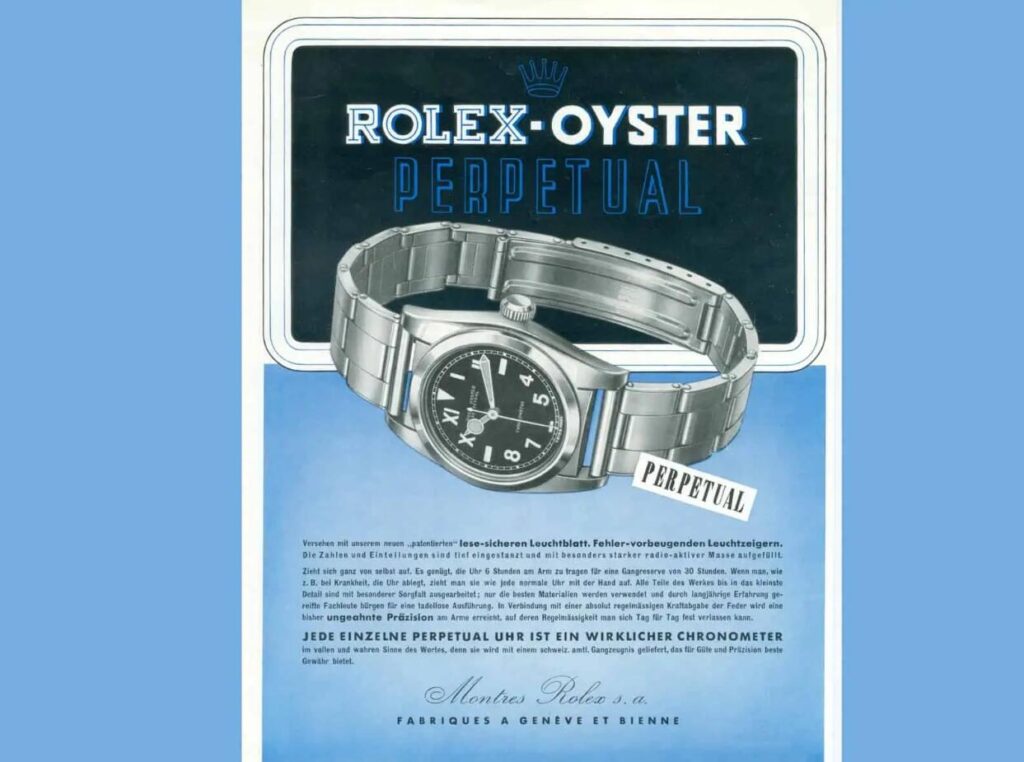
Genesis of the Radiomir Panerai
Because it simply did not exist, this dial was not even mentioned in the first Rolex reference 2533, which Panerai ordered in very small quantities and delivered to the Italian military from 1936 to 1938.
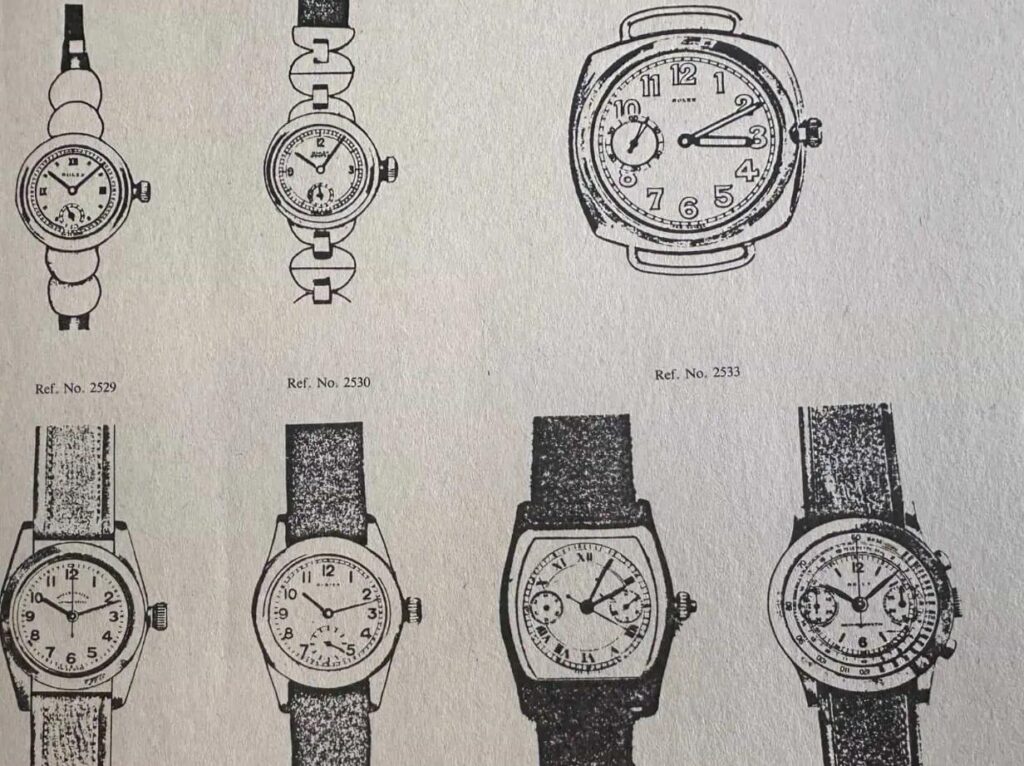
This ticking jumbo probably represented a Lépine pocket watch turned 90 degrees to the right with soldered brackets for attaching the bracelet and the 16-line hand-wound caliber 618 supplied by Cortébert. Of course, Rolex adapted the dial accordingly. As a result, the small second moved to the “9”
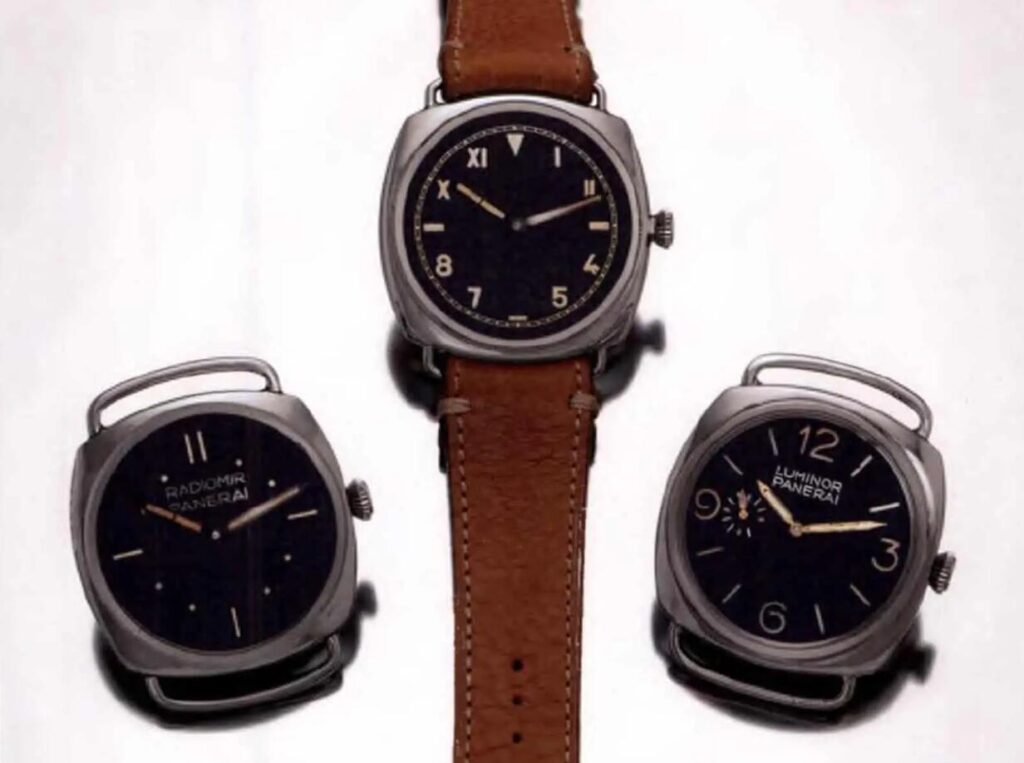
Giuseppe Panerai must have been impressed by the size of the case, as it also included appropriately sized dials and hands, which made reading during underwater combat operations much easier.